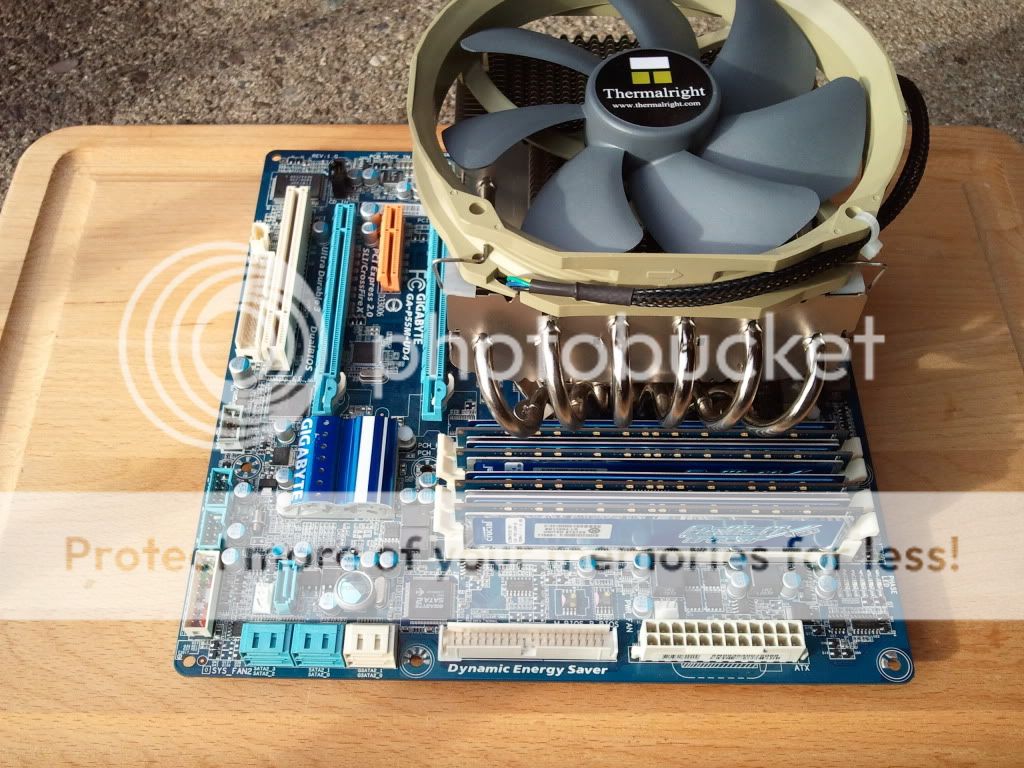1) Q: Why not more liquid? Your A: Because wick doesn't wick when overfilled.
A candle wick is always overfilled, yet it works, by pushing the melted wax to a place surrounded by air.
I don't like Kevinsbane's explanation either. We are dealing with surface film quantities either way. So let me rephrase the question:
If the wick is partially dry, what prevents the crucial part above the CPU of being that dry spot?
Be careful on your terminology. A "dry" wick still has a layer of surface water, except in situations of absolute 0% humidity. It has a surface film of water that will be present regardless of how much you rub away at it. This film of water is a function of relative humidity, and if you manage to remove it mechanically, it will reform as some of the humidity in the air condenses on to that dry surface. This film is also not a constant thickness; an area with less humidity will have a thinner film than an area with higher humidity. This film of water does still contribute to the heat transport properties of heat pipes. It would be technically inaccurate to say that the film of water "moves" from areas of higher thickness to lower thickness, but in practise this is what it "appears" to do.
That aside, the thing preventing the "dry" spot right above the CPU is enough working fluid in your heat pipe. And that is determined by various factors, but generally 3 major variables: design operating temperature, heat source, dissipation rate. In general, the greater the design operating temperature and the greater the heat flux, the more liquid is needed. The lower the dissipation rate at the cool end, the more liquid is needed.
You didn't seem to like my explanation as to why there isn't more liquid, so perhaps a quick analogy would be illustrative as to why more is not necessarily better.
Imagine that a heat pipe is a highway between A and B, the working fluid are buses, and the people are the units of heat to be transported. People gather at A at a certain rate, and the goal is to get them to B as efficiently as possible. Now, due to the peculiarities of physics*, a bus can ONLY leave A when it is full of people. If there's only 40 people in a 50 person bus, it doesn't leave; it just sits there waiting for 10 more people. Now, imagine that 5 people a minute are arriving at A. It takes 10 minutes to fill up a bus, then the bus leaves to drop people off at B and another one comes. During those 10 minutes, people are just sitting around at A, getting angry that the bus isn't leaving. 1 min before the bus leaves, 45 people (45 units of heat) are at A.
Now, we double the capacity of the system: we double the size of the bus. (The physics behind this doesn't mean we double the number or frequency of bus arrivals). So now, we have a 100 person bus. Rate of people arriving doesn't change. So now it takes 20 minutes to fill up a bus. People have to wait twice as long! Not only that, 1 min before the bus leaves, 95 people are at A (95 units of heat)!
So what does this all mean? A given heatpipe is optimized for a certain set of environmental factors. Heatpipes also only operate at a certain temperature range. For a CPU heatpipes, this is the design tradeoff.
Adding more liquid increases the capacity of a heatpipe to transfer heat. At the same time, it increases the operating temperature; both the minimum temperature (where enough evaporation at the hot end takes place) and maximum (all the liquid in the heat pipe evaporates) is increased. What prevents a "dry" spot above the CPU is proper design and testing for the right amount of liquid for your design specs.
So, for your CPU: do you want your heatsink to have the operating temperature between 50-150C, and thus safeguard your CPU up to 150C? That is, it only really starts working @50C, but it keeps liquid at the hot area up to 150C. Or do you want the heatsink to start working @25C, but work only up to 100C?
5) Do head pipes actually reach the boiling point?
They can. Getting to boiling point would significantly degrade the efficiency of a heat pipe though. When both ends reach boiling, the heatpipe has failed and the hot end rapidly increases in temperature. For a system that is working properly, no.
*Heating 1 mL water from 20-30C = ~42 J (+42). Heating it further from 30-40C might take an additional ~42 J (+42), but then assume it competely evaporates, which consumes 2240J (-2240).





